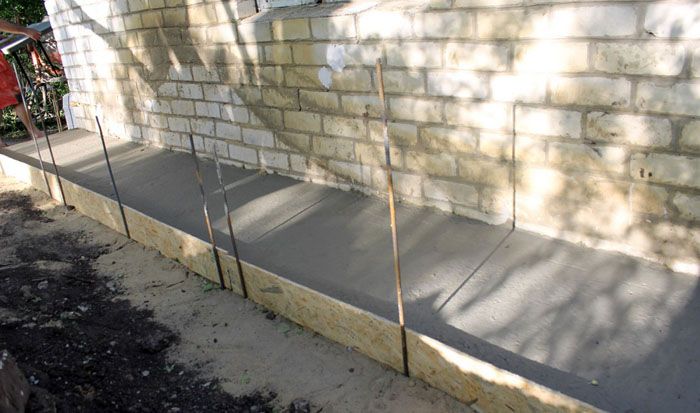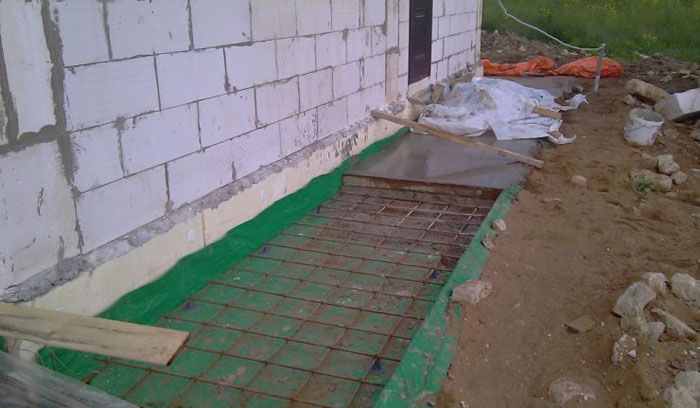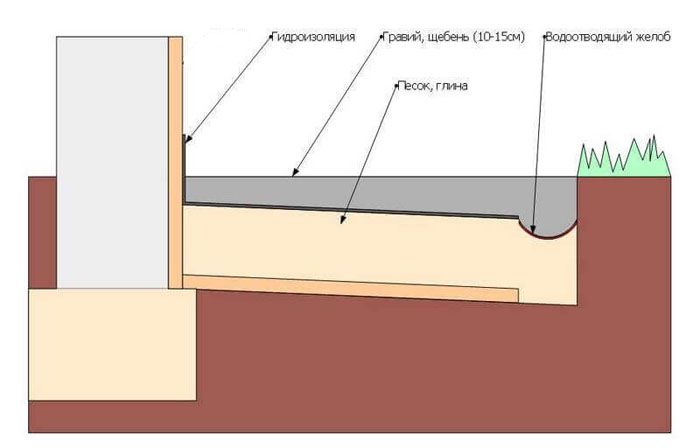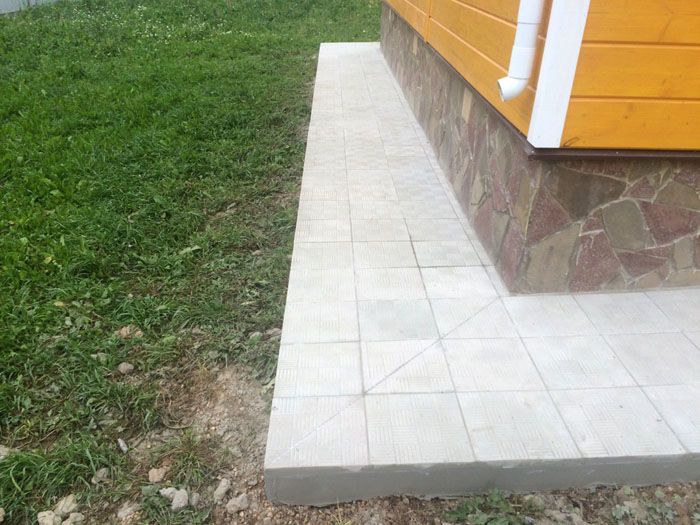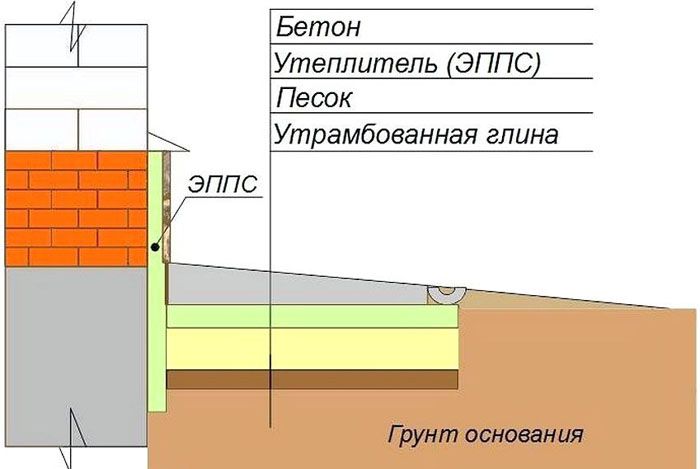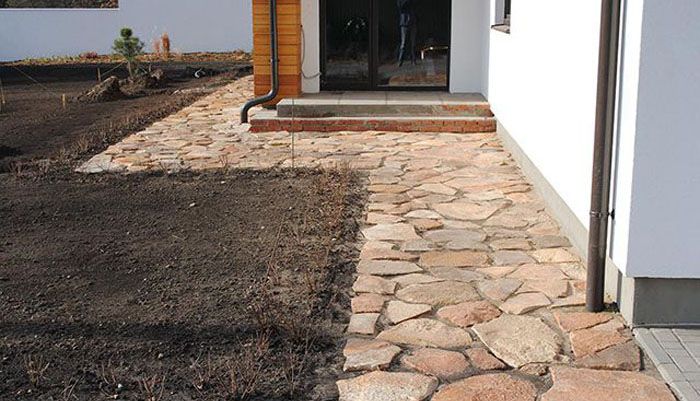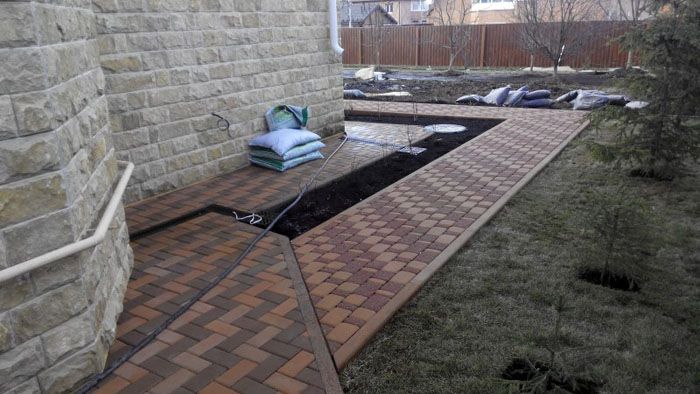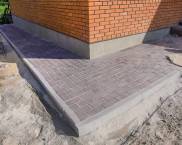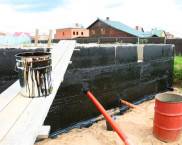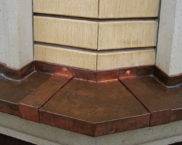Why do we need a blind area around the house - types and nuances of work on its manufacture
A person who decides to build a country house or dacha with his own hands sometimes does not represent the entire amount of work to be done along the way. If everyone thinks about the construction of the foundation, walls and roof initially, then not everyone thinks about the issues of protecting these structures from external influences and the aesthetic design of the local area at the stage of preparation for work. One of the types of construction and installation work related specifically to the protection of building structures and which is partly an element of the decoration of the local area is the construction of a blind area around the building. Why do we need a blind area around the house: what it is and its types according to the type of materials used, their advantages and disadvantages, as well as the nuances of performing work with them - the topic of this article by the homemaster.techinfolux.com/en/ editorial office
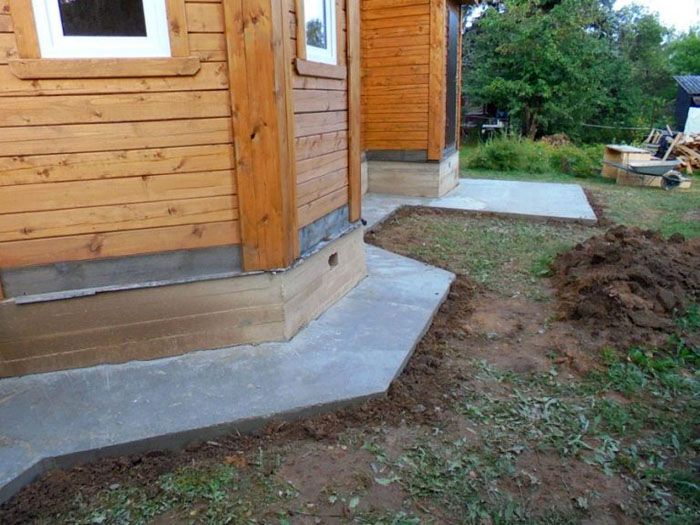
The blind area built around the house corresponds to its geometric shape and can differ in the types of materials used that determine the technology of its manufacture
The content of the article
Blind area - what is it
A blind area is a strip made of concrete, asphalt or other building material, located around the perimeter of a building or structure at a certain angle of inclination away from the construction site and performing protective functions in relation to the foundation in relation to precipitation and other external influences of a hydrological nature.
The blind area can be attributed to the storm sewer system arranged around the building and in the local area. Its main purpose: protection foundation from moisture ingress, as well as drainage of water from the surface of the enclosing structures, which are the walls of the building.
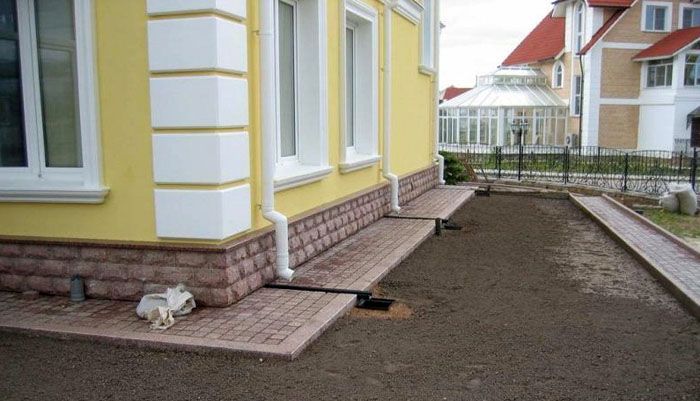
When constructing the blind area, the location of the gutters from the roof of the building, as well as the location of the drainage system (wells and storm sewer pipes)
Purpose and functionality
As already mentioned above, the main purpose of the blind area is to protect the foundation from moisture from the external environment. In addition, this design performs a number of other important functions, which can be formulated as follows:
- improves the temperature regime of basement use, which is achieved through the use of thermal insulation materials in its manufacture;
- protects the basement of the building from excessive waterlogging, thereby increasing the service life of building structures;
- prevents the destruction of the foundation, which can occur when water freezes in winter;
- provides drainage of storm water to the sewerage system;
- can be used as walking paths to facilitate cleaning of the local area;
- improves the visual perception of the building, giving it a complete and harmonious appearance.

The wide structure will not only provide drainage of storm water and decorate the local area, but will also serve as a footpath
Important! In order to make a blind area that meets all the requirements for it, it is necessary to comply with the technology for performing work and use high-quality materials.
Device and manufacturing features when using different materials
In the manufacture of the blind area, various materials are used: this imposes certain features on the performance of work, and also determines the advantages and disadvantages of the manufactured structure.
Such building elements are classified as follows:
- solid structures - concrete and asphalt are used for their manufacture, as well as mixtures based on them;
- soft - clay, crushed stone, gravel;
- with decorative trim;
- with an insulating layer device.
Concrete blind area
Concrete is a building material that is in demand at all stages of construction and installation work: it has many positive properties, is affordable and easy to use.When installing a blind area using concrete, the soil layer is initially removed, the formwork is mounted, and then the "pie" of the structure being manufactured is laid.
A variant of layering the materials used is shown in the following figure:
Note! When using asphalt and asphalt concrete mixture, the work is carried out in the same way as when using concrete.
The advantages of this design are the following indicators:
- affordable cost;
- long service life;
- effective performance of the main function - drainage of water from the external environment;
- ease of use.
Of the disadvantages of a blind area made of concrete or asphalt, it should be noted:
- not the most aesthetic appearance;
- the possibility of cracks on the outer surface, which worsen the performance of the structure;
- the need to manufacture formwork leads to an increase in the cost of the work performed and the amount of materials used;
- the concrete hardening process takes a long time and requires certain conditions (temperature, humidity), which increases the terms of work.
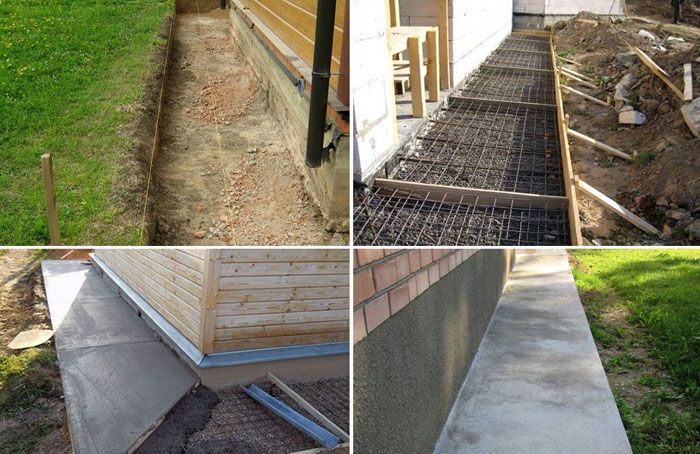
Stages of work using concrete: making trenches with tamping of the base, installation of formwork and laying of reinforcement, pouring concrete and leveling it
From rubble and gravel
Crushed stone and gravel allow water to pass through, therefore, when making blind areas with their use, a protective layer that prevents water penetration is laid under them.
A diagram of one of the options for arranging a blind area using gravel is shown in the following figure:
Note! Special materials can be used as a waterproofing layer or a clay lock can be made, which is also capable of providing the required level of waterproofing.
The advantages of a soft blind area made using the considered inert materials are the following indicators:
- lower cost compared to the option of using concrete or asphalt;
- the ability to withstand the heaving of the soil without damaging its structure during the period of seasonal fluctuations in the outside air temperature;
- there is no need for expansion joints;
- the ability to perform decoration by placing flower beds and other decorative elements.
The main disadvantage of the soft structure is its lower resistance to external mechanical stress.
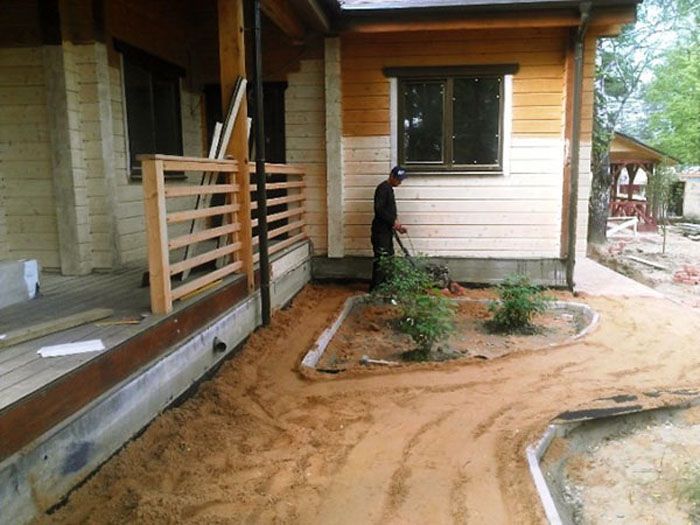
The clay blind area is quite in demand if it is planned to put paving stones or porcelain stoneware on its surface
Note! One of the simplest options for arranging a soft blind area is to use clay as the main material for the outer coating of the structure being constructed.
Blind areas with decorative trim
As a decorative finish for such elements, materials such as paving stones, paving slabs, porcelain stoneware and other finishing materials that meet the outdoor conditions and provide the required waterproofing parameters.Depending on the type of blind area (hard, soft), the installation of decorative coverings is also carried out in different ways.
Note! Paving stones are usually laid on a soft blind area with a clay castle device. Porcelain stoneware is placed on a rigid structure until the concrete hardens or later, using special adhesives.
The main advantage of using decorative finishing is that with its help it is possible to give the house and the adjacent territory a unique appearance and attractiveness.
The disadvantage is that when using such materials, the cost of construction increases.
Related article:
Laying paving slabs with step-by-step video instructions. A practical step-by-step guide to self-laying tiles in a separate material on our portal.
With an insulating layer device
An insulated blind area around the house is needed if the construction object is located in a cold climatic zone, and the soils at the location tend to heave when freezing.
The diagram of the "pie" of the insulated blind area is shown in the following figure:
The advantages of using an insulating layer in the manufacture of such elements are the following indicators:
- the likelihood of damage to building structures due to heaving of the soil is reduced;
- it becomes possible to provide the required temperature regime inside the basement or basement floor with minimal costs for their heat supply;
- when performing the appropriate calculations at the stage of developing design documentation, it is possible to change the structure of the foundation - the depth of its occurrence is adjusted, taking into account the possible freezing of the soil.
The disadvantage of this design, as in the case of using decorative materials, is the rise in the cost of construction.
How to make a blind area around the house - nuances
When making your own blind area around the house, you need to know the basic requirements for such structures and the technology for performing work with the materials used.
Important! The technical requirements for the execution of the blind area are regulated by SP 71.13330.2017 “Insulation and finishing coatings.Updated edition of SNiP 3.04.01-87 "and SP 22.13330.2011" Foundations of buildings and structures. Updated edition of SNiP 2.02.01-83 * ".
Knowing how to work with the materials selected for the work and having familiarized himself with the technical requirements, even a novice developer can make such a structure.
But for successful manufacture, it is necessary to observe some of the nuances of the work:
- tilt anglethe surface of the blind area, directed away from the building wall, should be 1.0 - 10.0%, depending on its width;
- the width of the structure should be such that water from the roof falls on its surface: it should be 25-30 cm wider than the overhang of the roof;
- if used concrete, its brand must be at least M400, otherwise the overhaul periods for this element are reduced;
- the perimeter of the building must be closed, otherwise moisture will be able to flow to the foundation in places where there is no blind area;
- the presence of a border along the edge will ensure the safety of the structure by preventing the penetration of the roots of trees and shrubs into its internal space;
- by raising the lower outer edge of the structure above the ground, it is possible to prevent flooding of the blind area during the period of heavy rains, when snow melts and other adverse weather events.
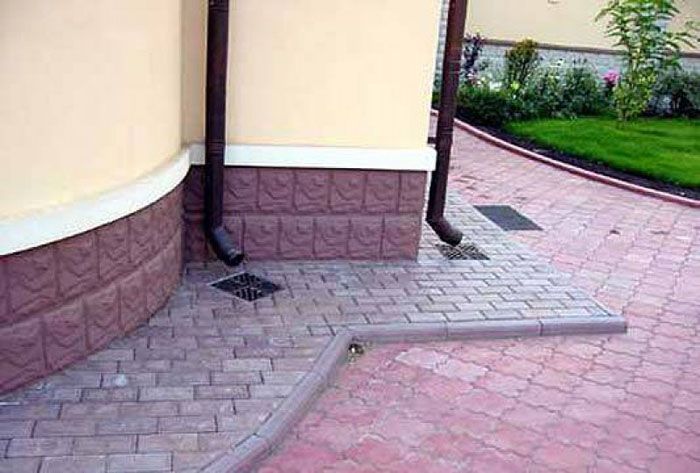
Installation of storm sewers and blind areas are technically related stages of work that ensure the removal of surface and melt water
Related article:
How to make a blind area around the house with your own hands? We will tell you about competent design and installation in a special publication of our portal.
Video: do-it-yourself blind area around the house
Even after studying the technical requirements and reading this article, most likely, a novice developer will not be left completely without questions related to the construction of a blind area around a country house or summer cottage. In this case, for the successful completion of the work, it will be useful to watch the following video:



